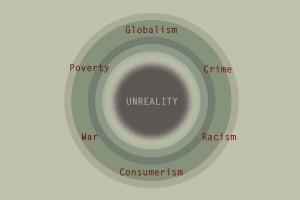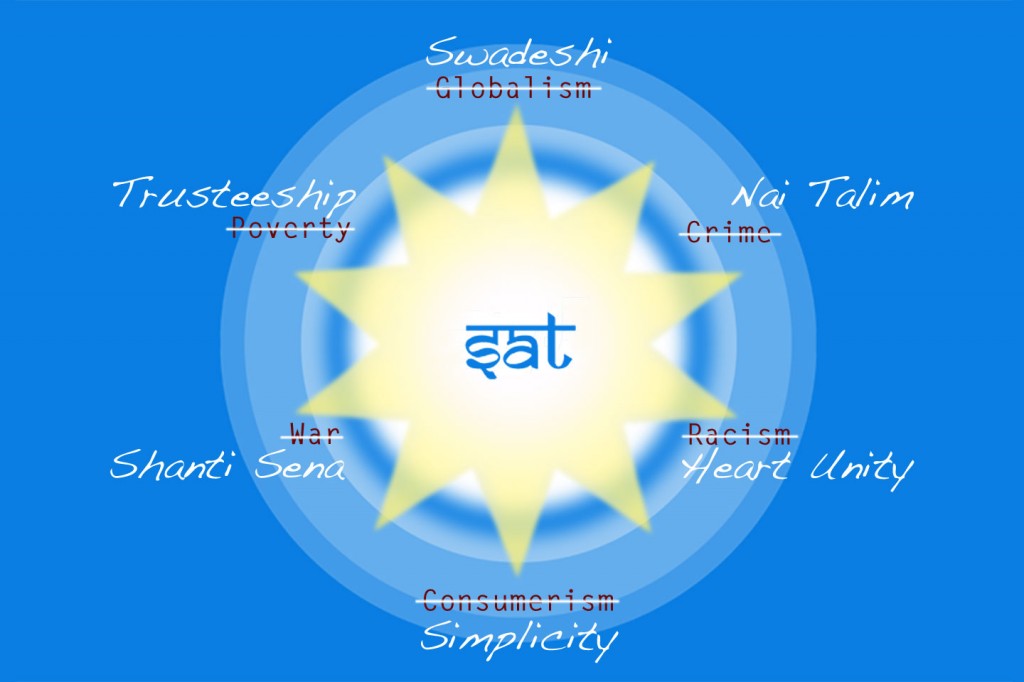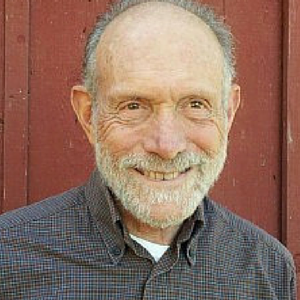That man came back from South Africa, having realized God, and quietly set about solving every problem in the modern world.
When Michael Nagler heard this quiet, dramatic statement by his meditation teacher, Sri Eknath Easwaran of the Blue Mt. Center of Meditation, it changed his life. These two pictures are an attempt to illustrate graphically how the problems of the modern world stem from a fundamental commitment to unreality, or separateness, and how Gandhi, by contrast, had a rooted commitment to Reality, the fundamental unity of life. His word for Reality was the ancient term Sat, which really has three meanings:
- truth (as opposed to untruth)
- that which is Real (as opposed to unreal, having no existence), and
- good (as opposed to harmful, bad).
This commitment, or faith, enabled him to come up with a set of general principles along which life would ideally be organized, and along which he began to organize it, as a series of “experiments with truth,” as far as in him lay to influence things around him.
What the second picture illustrates is how those principles would apply to the set of problems selected in the first picture (of things as they unfortunately are). They are, going clockwise from twelve o’clock:
svadeshi, localism. On the psychological level, working within your own strengths and weaknesses. On the economic level, buying and consuming locally as far as possible. The charkha or “spinning” campaign to break reliance on British manufactured cloth and rely instead on khadi, or homespun cotton, was a primary example.
nai talim, new education, based on practical and spiritual principles. There is a network of Gandhian education institutions functioning well to this day in India
heart unity, a brilliant concept that works within a “unity and diversity” model of life. It encourages one to seek the unity of aspiration underlying all differences (and thus be free to appreciate the diversity of those differences.
shanti sena, peace armies: a bold experiment to place teams of local volunteers in various areas to provide good offices, gain the trust of local inhabitants, and be ready to intervene or if necessary interpose oneself between hostile groups in case of conflict. From this experiment, not very active at present in India, a worldwide institution that has placed thousands of trained volunteers (or lightly supported “professionals”) in conflict areas. [Nonviolent Peaceforce is an excellent example.]
trusteeship, a concept he borrowed from English law where one does not “own” a thing but acts as its trustee for the public benefit. A core concept of Gandhian economics, this is the nonviolent equivalent of ownership and if adopted would lead to a peaceful transfer of wealth to needier sections of a society, thus obviating class warfare or violent revolution. (It would also enable spiritual growth, through detachment!).










